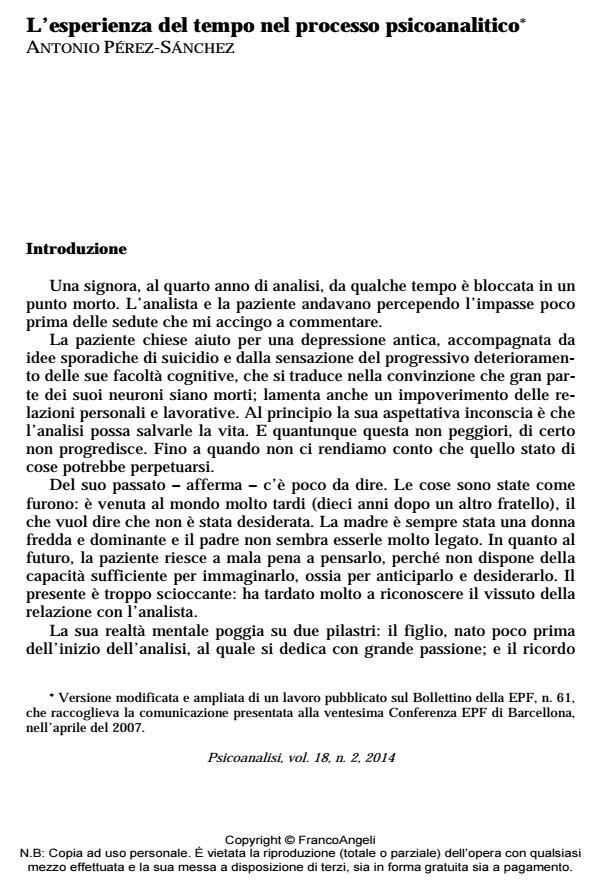L’esperienza del tempo nel processo psicoanalitico
Journal title PSICOANALISI
Author/s Antonio Pérez-Sanchéz
Publishing Year 2015 Issue 2014/2
Language Italian Pages 19 P. 39-57 File size 92 KB
DOI 10.3280/PSI2014-002004
DOI is like a bar code for intellectual property: to have more infomation
click here
Below, you can see the article first page
If you want to buy this article in PDF format, you can do it, following the instructions to buy download credits

FrancoAngeli is member of Publishers International Linking Association, Inc (PILA), a not-for-profit association which run the CrossRef service enabling links to and from online scholarly content.
Current notions about Time according to the antinomy between what lasts while flowing at the same time, serves as a model that characterizes our psychoanalytic task, when considering the psychoanalytic situation expressed in the here and now interaction between analyst and patient within its interplay with the psychoanalytic process. The first could be understood as a transversal cutting edge of the experienced phenomena between both participants, while the second one, the process, would be connected with the longitudinal cutting edge of such a relationship. The Augustinian idea about time, a phenomena that entails a tridimensional present, in as much as it regards the present-passed, namely memory; the present-present namely perception and the present-future as the expectation of what is about to happen ; all this serves as a support to explore the interplay between these three modalities from the perspective of the psychoanalytic process. The case of a woman patient within a situation of analytic impassecontributes to illustrate clinically some of these aspects about timing.
Keywords: Time, psychoanalytic process, here and now
Antonio Pérez-Sanchéz, L’esperienza del tempo nel processo psicoanalitico in "PSICOANALISI" 2/2014, pp 39-57, DOI: 10.3280/PSI2014-002004